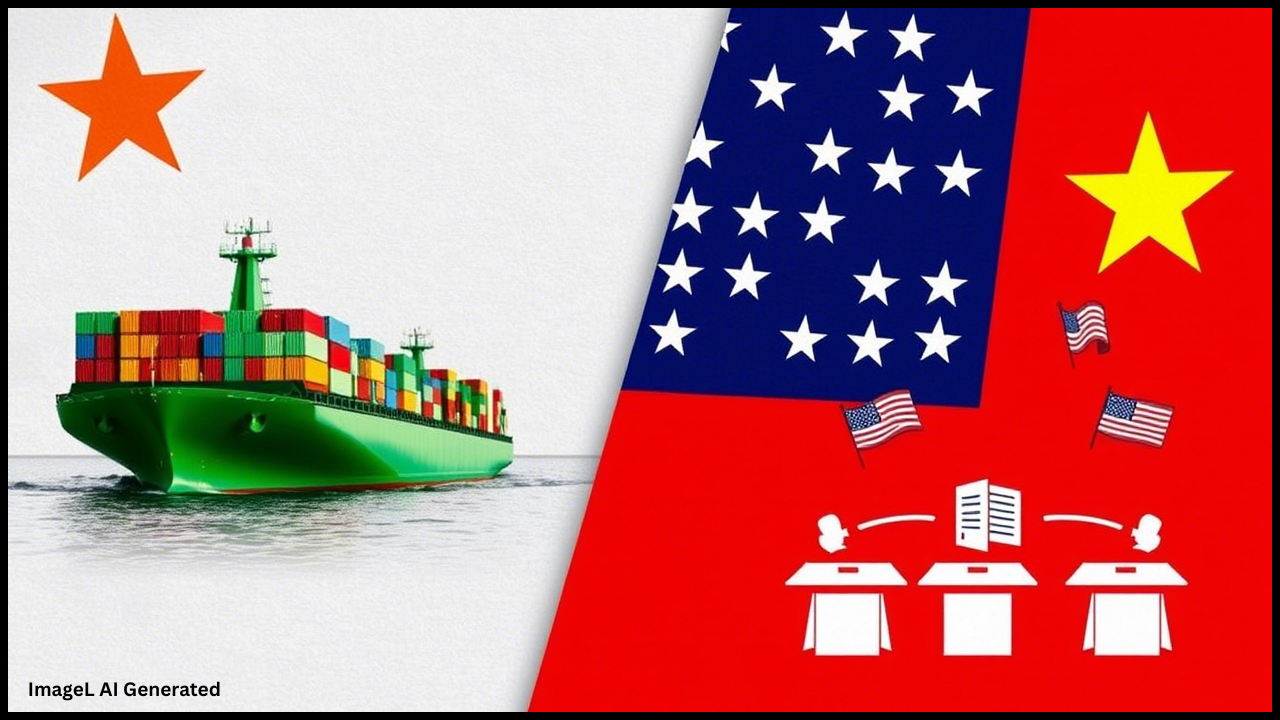In recent months, China has accused the United States of “seriously violating” a trade truce that both countries agreed upon in May 2025. This agreement was intended to ease escalating trade tensions and halt the ongoing tariff war between the two economic superpowers. However, recent U.S. actions—particularly the introduction of new export controls on advanced technology and restrictions on student visas—have led China to claim that the U.S. is undermining the spirit and specific terms of the deal.
For businesses, policymakers, and global markets, understanding the unfolding situation is essential. This article will provide a comprehensive overview of the dispute, explain the key points of contention, analyze the economic impact, and explore potential outcomes. Whether you are an investor, a business leader, or simply interested in global affairs, this guide aims to make the complex issues surrounding the U.S.-China trade relationship clear and accessible.
Quick Summary
- Trade Truce Violation: China claims the U.S. has breached the May 2025 trade truce by imposing new export controls and visa restrictions.
- U.S. Export Controls: Restrictions focus on AI chips and chip design software, which are vital to China’s technological development.
- China’s Response: China promises “resolute and forceful measures” to safeguard its interests.
- Market Impact: U.S. stock markets declined while Treasury yields rose amid rising uncertainties.
- Diplomatic Signals: A potential summit between Presidents Donald Trump and Xi Jinping could help de-escalate tensions.
Understanding the U.S.-China Trade Truce
What Is a Trade Truce?
A trade truce is an agreement between countries to pause or reduce trade conflicts, such as tariffs or sanctions, to avoid hurting businesses and economic growth. In May 2025, after years of a back-and-forth tariff war, the U.S. and China agreed to a truce designed to pause escalating tariffs and create a framework for resolving deeper trade issues.
Before this truce, tariffs had been imposed on hundreds of billions of dollars of goods, affecting industries ranging from agriculture to technology. These tariffs disrupted global supply chains, raised prices for consumers, and created uncertainty for businesses worldwide.
Why Was the Truce Important?
The May 2025 truce was seen as a hopeful step toward reducing tensions and stabilizing the global economy. By pausing new tariffs and addressing some contentious issues, both sides aimed to negotiate more permanent solutions. It was a pause button, offering breathing room for companies and markets affected by the trade war.
What Led to the Recent Tensions?
U.S. Export Controls on Technology
One of the major flashpoints in the renewed tensions is the U.S. government’s decision to impose new export restrictions on advanced technology, particularly on AI chips and chip design software. These components are crucial for China’s ambitions in artificial intelligence, semiconductors, and other high-tech industries.
The U.S. argues these controls are necessary to protect national security and maintain a competitive edge in critical technologies. However, China views these restrictions as an attempt to slow its technological development and infringe on its economic sovereignty.
Visa Restrictions
In addition to export controls, the U.S. has also moved to restrict student visas for Chinese nationals, which many experts interpret as part of a broader strategy to curb technology transfer and limit educational exchanges in sensitive fields. China considers this an unfair and discriminatory move that violates the spirit of cooperation embedded in the trade truce.
China’s Official Response
China’s Ministry of Commerce has condemned these actions, stating they “seriously violate” the trade truce agreed upon earlier this year. China has labeled the U.S. measures as “discriminatory” and “unilateral,” warning that it will take “resolute and forceful measures” to protect its interests if the U.S. continues down this path.
This includes the possibility of retaliatory tariffs, regulatory restrictions on U.S. companies operating in China, and other economic countermeasures.
Economic and Market Impacts of the Renewed Tensions
Stock Market Reactions
The resurgence of trade tensions has unsettled investors worldwide. Following China’s announcement, major U.S. stock indices experienced declines:
- The Dow Jones Industrial Average dropped by 166 points, or 0.4%.
- The S&P 500 and Nasdaq also fell by 0.3% and 0.1%, respectively.
These market movements reflect investor fears that the trade dispute could escalate, disrupting global supply chains and slowing economic growth.
Treasury Yields and Inflation Concerns
In parallel, U.S. Treasury yields have climbed, signaling increased borrowing costs and inflation worries:
- The 30-year Treasury yield rose to 4.963%.
- The 10-year Treasury yield increased to 4.434%.
This rise is partly driven by concerns over fiscal deficits tied to recent GOP tax cuts and fears that ongoing tariffs could stoke inflation by increasing import prices.
Impact on Global Supply Chains
The trade conflict has already exposed vulnerabilities in global supply chains, particularly in electronics, manufacturing, and agriculture. Renewed tensions threaten to disrupt these supply chains further by imposing new tariffs or export restrictions on critical components.
For companies reliant on cross-border trade, these disruptions can lead to higher costs, delays, and challenges in inventory management. Consumers may face higher prices on everyday goods, from smartphones to food items.
Diplomatic Efforts and the Path Forward
Potential Trump-Xi Summit
Despite the escalation, there are indications that both Washington and Beijing want to avoid a full-scale trade war. Reports suggest a potential direct meeting between President Donald Trump and Chinese President Xi Jinping could be in the works. Such high-level dialogue may help clarify positions, rebuild trust, and possibly restore the trade truce.
What Would a Successful Resolution Look Like?
A durable resolution would likely involve:
- Mutual concessions on export controls and technology transfers.
- Clearer agreements on intellectual property protections.
- Steps to ensure fair treatment of students and professionals in both countries.
- Mechanisms for ongoing dialogue and dispute resolution.
For the global economy, such a resolution could ease uncertainty, support growth, and reduce inflationary pressures.
China Accuses U.S. of Provoking Tensions: How to Understand and Navigate U.S.-China Trade Tensions: A Detailed Guide
Step 1: Learn the Basics of Trade Agreements
Trade agreements set the rules for tariffs, export controls, and business practices. Keeping informed on these agreements and their updates is crucial for anticipating changes.
Step 2: Identify Key Sectors at Risk
Currently, sectors like AI, semiconductors, and education exchanges are most vulnerable to trade restrictions. Companies in these fields should pay close attention.
Step 3: Monitor Market and Economic Indicators
Stock indices, commodity prices, and treasury yields can signal market sentiment and economic impact. Staying updated helps in making informed business or investment decisions.
Step 4: Track Diplomatic Developments
Official statements, meetings, and negotiations provide clues about the direction of the trade relationship. Engaging with expert analysis can offer deeper insights.
Step 5: Prepare Contingency Plans
Businesses should prepare for possible tariffs, supply chain disruptions, and regulatory changes by diversifying suppliers, exploring alternative markets, and enhancing operational flexibility.
Overall Summary
The ongoing trade dispute between China and the U.S. highlights the challenges of managing global economic relations in an era of rapid technological advancement and geopolitical competition. Recent accusations of violating the trade truce emphasize how fragile such agreements can be.
For professionals, businesses, and investors, staying informed about export controls, market trends, and diplomatic efforts is vital. While uncertainty remains, diplomatic engagement offers a pathway to easing tensions and avoiding the severe economic consequences of an expanded trade war.
Read More
CDSL Gains 10% in a Day – Updated Analyst Target Revealed
FAQs on China Accuses U.S. of Provoking Tensions
Why did the U.S. impose export controls on AI chips?
The U.S. government considers advanced AI technology critical for national security and global competitiveness. Export controls aim to limit China’s ability to develop these technologies, which could have military or economic implications.
What actions could China take in response?
China may impose retaliatory tariffs, restrict exports of rare earth minerals essential for U.S. industries, or tighten regulations on American companies operating in China.
How do these tensions affect everyday consumers?
Tariffs and restrictions often lead to higher production costs, which can translate into more expensive consumer goods such as electronics, vehicles, and food.
Are there signs the trade dispute will be resolved?
The possibility exists, especially if the leaders of both countries meet and commit to dialogue. However, progress depends on mutual willingness to compromise.
Where can I find reliable updates on the situation?
Official government websites such as the U.S. Department of Commerce and China’s Ministry of Commerce provide updates. Reputable news sources include Reuters and Financial Times.

